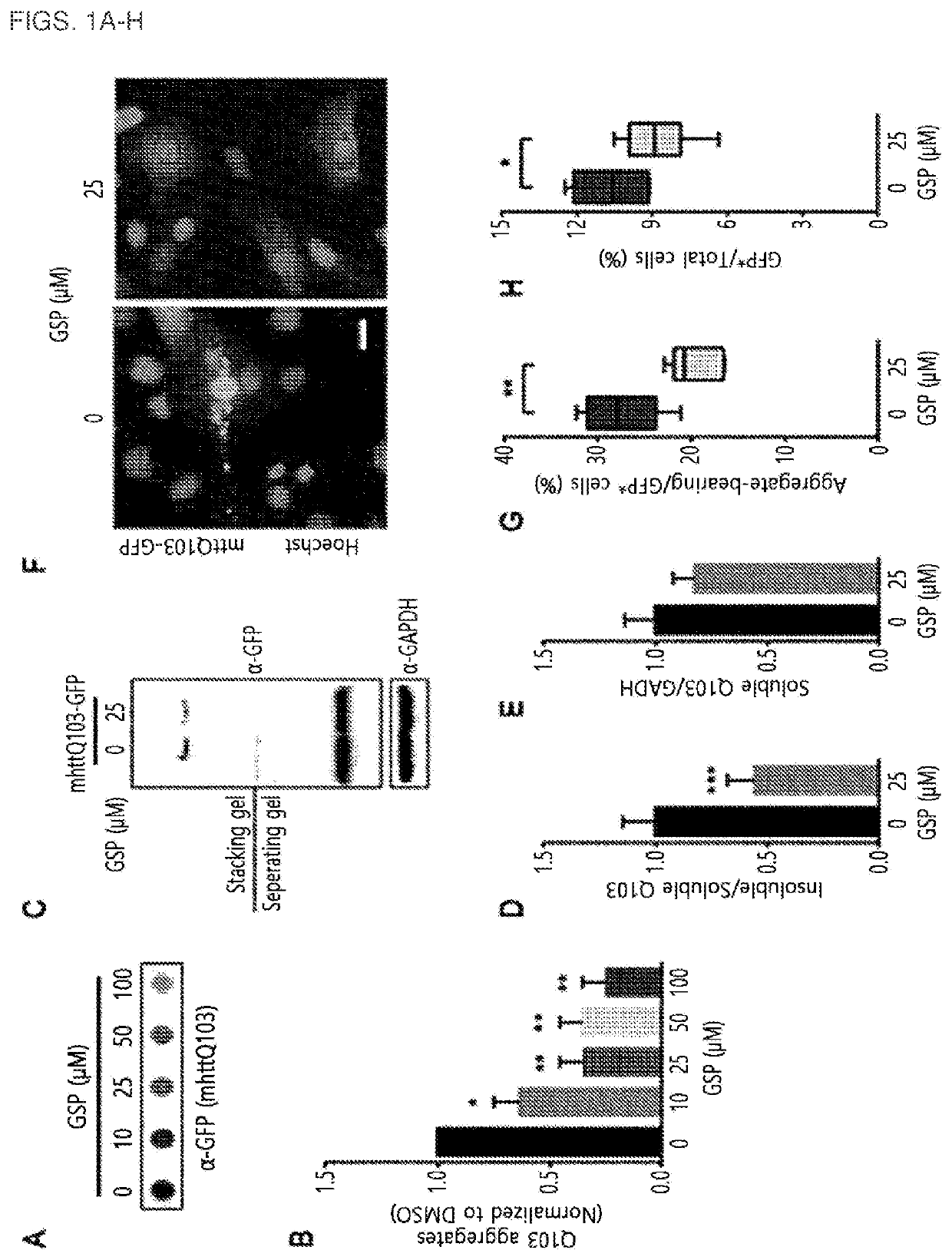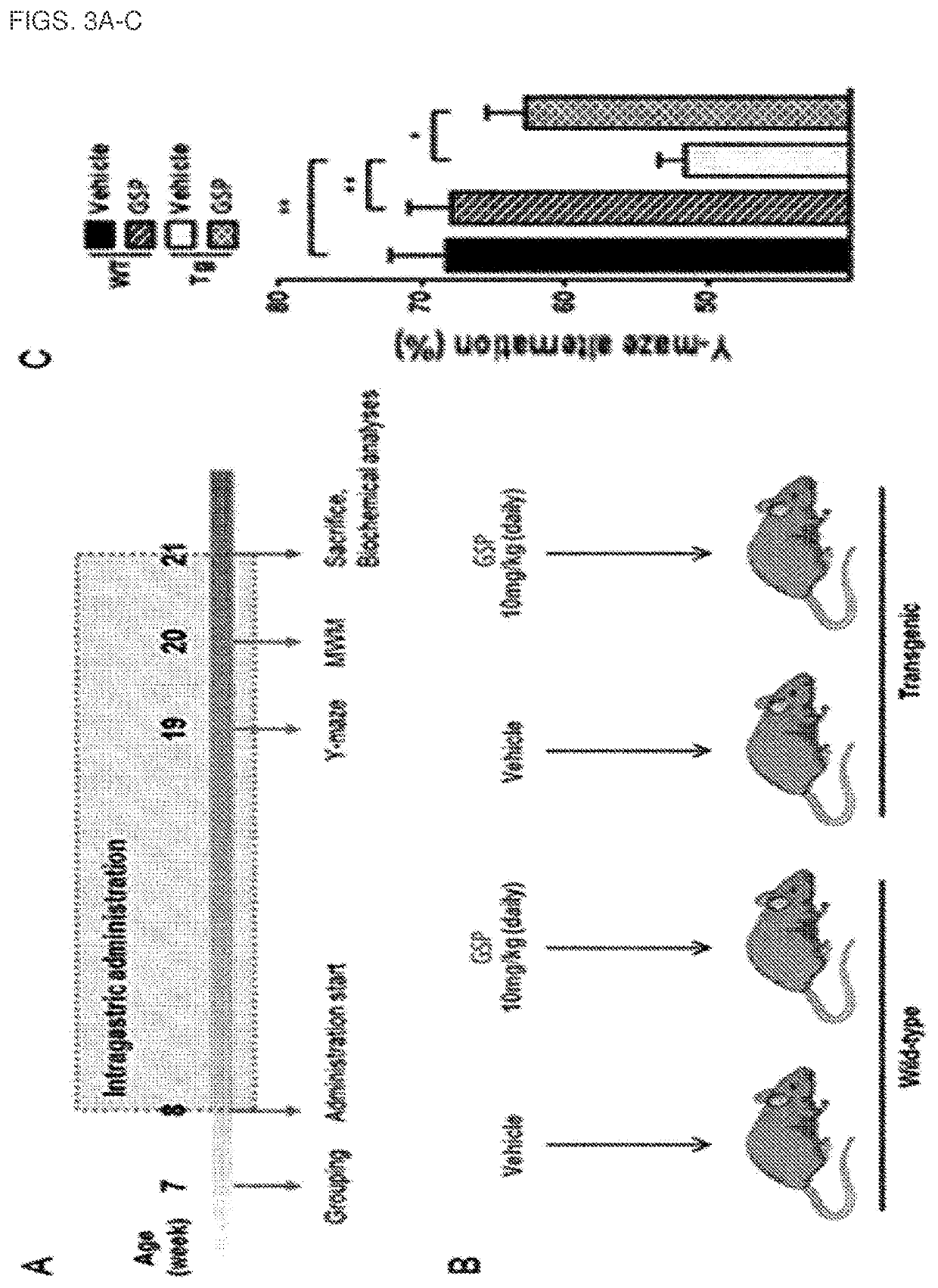Composition comprising gossypetin for prevention or treatment of neurodegenerative disease
a neurodegenerative disease and gossypetin technology, applied in the direction of nervous disorders, drug compositions, food ingredients, etc., can solve the problems of generating reactive oxygen species, microglia inflammatory response, and unable to effectively treat alzheimer's disease, and achieve excellent inhibition of protein aggregation, excellent prevention and treatment effect, and excellent memory
- Summary
- Abstract
- Description
- Claims
- Application Information
AI Technical Summary
Benefits of technology
Problems solved by technology
Method used
Image
Examples
example 1
Identification of In Vitro Effect of Gossypetin
[0095]In order to investigate whether gossypetin, a compound derived from a naturally occurring material, had an effect on the suppression of a degenerative brain disease, an in vitro experiment was conducted.
example 1-1
Identification of Concentration-Dependent Inhibitory Effect of Gossypetin on Intracellular Polyglutamine Protein Aggregation
[0096]Polyglutamine protein aggregation is a cause of a degenerative brain disease. In order to investigate the polyglutamine protein aggregation inhibitory effect of gossypetin, U2OS cells expressing VRK2 were treated with different concentrations of gossypetin after the expression of a green fluorescent protein-conjugated polyglutamine protein, and a dot blot assay was performed. The protein aggregates formed in the cells were observed via electrophoresis, and the intracellular protein aggregate formation was observed using a microscope and quantitatively expressed.
[0097]It was identified from the results that the polyglutamine protein aggregates were reduced depending on the gossypetin concentration (FIGS. 1A and 1B). In particular, the amount of insoluble protein aggregates was significantly reduced (FIGS. 1C to 1E), and the number of protein aggregate-bear...
example 1-2
Identification of Interaction Between Gossypetin (GSP) and VRK2, Concentration-Dependent Inhibition of Gossypetin on VRK2 activity, and Chaperone Protein Preservation
[0098]The kinase VRK2 is known to prevent the elimination of polyglutamine aggregates by regulating TRiC chaperone protein in cells. Therefore, the inhibition of VRK2 is presumed to suppress the polyglutamine aggregation, and in order to investigate whether gossypetin has a VRK2 activity inhibitory effect, the VRK2 activity inhibition was assayed by treatment with different concentrations of gossypetin.
[0099]First, gossypetin was chemically bound to Sepharose 4B (FIG. 2A), and then the binding between gossypetin and VRK2 was investigated. VRK2 was identified as binding to only gossypetin-Sepharose 4B without attachment to Sepharose 4B, indicating that VRK2 and gossypetin bound to each other (FIG. 2B). It was also identified that the addition of gossypetin inhibited the binding between VRK2 and gossypetin-Sepharose 4B, r...
PUM
 Login to View More
Login to View More Abstract
Description
Claims
Application Information
 Login to View More
Login to View More - R&D
- Intellectual Property
- Life Sciences
- Materials
- Tech Scout
- Unparalleled Data Quality
- Higher Quality Content
- 60% Fewer Hallucinations
Browse by: Latest US Patents, China's latest patents, Technical Efficacy Thesaurus, Application Domain, Technology Topic, Popular Technical Reports.
© 2025 PatSnap. All rights reserved.Legal|Privacy policy|Modern Slavery Act Transparency Statement|Sitemap|About US| Contact US: help@patsnap.com



